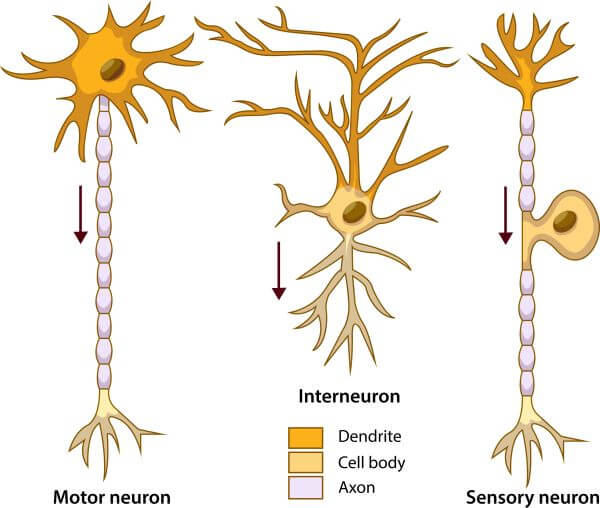The cell body (also called the soma) is the spherical part of a neuron that houses the nucleus. It also contains all the other organelles essential for cell survival and plays a key role in supplying energy, proteins, and other materials to the axon.

What is the Cell Body?
The cell body (AKA the soma) is one of the three main parts of a nerve cell (or neuron). It’s the rounded, bulbous part of the cell that houses the nucleus, along with other key organelles like the endoplasmic reticulum, ribosomes, mitochondria, and Golgi apparatus.
The cell body is connected to the dendrites, which project outwards from the soma and receive chemical signals from other neurons. They convert these chemical signals to electrical impulses before transmitting them to the cell body.
The axon is a long extension that carries nerve impulses away from the cell body. The information is transmitted to other neurons, muscle cells, and organs via the axon terminals at the end of the axon.

Structure of the Cell Body
The cell body is the spherical part of a neuron that contains the nucleus and other major organelles. It is surrounded by a plasma membrane and contains key structures common to most other cells, including cytoplasm, mitochondria, endoplasmic reticulum, ribosomes, Golgi apparatus, lysosomes, endosomes, and peroxisomes. These organelles carry out all the functions necessary for the survival of the neuron, including protein synthesis, respiration, and other key metabolic functions.
At one end of the soma is a specialized structure called the axon hillock. This connects the nerve cell body to the axon and controls the firing of signals (or action potentials) along the length of the axon.

The Function of the Cell Body
The nerve cell body contains the nucleus and, therefore, all the genetic information of the neuron. The nucleus directs all cellular activity and contains the DNA blueprints of all the cell’s proteins.
The cell body also contains ribosomes and is the site of virtually all protein production in the neuron (although some proteins are also produced in the dendrites). Therefore, the soma provides essential proteins to the axon and axon terminals, where they are used for renewal and repair. The cell body also the only part of the neuron that contains lysosomes. These are spherical organelles filled with digestive enzymes, which they use to break down and recycle dead or damaged cell materials. Damaged membranes and organelles are therefore transported from the axon to the soma for degradation. Both proteins and waste materials are transported between the soma and axon along ‘tracks’ called microtubules.

The cell body also receives information from the dendrites in the form of electrical signals. These are transmitted through the cell body to the axon hillock where, if the electrical signal is strong enough, an action potential is created. This action potential (also called a nerve impulse) is then conducted along the length of the axon, and the information is transmitted to other cells at the axon terminal.
The Function of Neurons
The cell body is a key structural component of neurons which are the basic functional units of the nervous system. The key role of neurons is to receive information from cells (via their dendrites) and pass this information on to other cells (through the axon).
There are three different types of nerve cells in the human body. These are the sensory neurons, motor neurons, and interneurons.

- Sensory neurons are connected to the sense organs and detect information about the external environment.
- Motor neurons transmit signals from the brain to the muscles and are responsible for all voluntary muscle movement.
- Interneurons connect other neurons to one another
